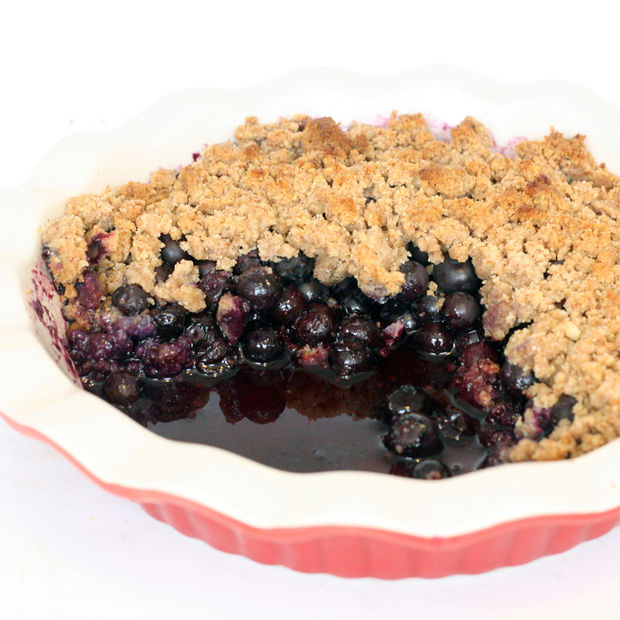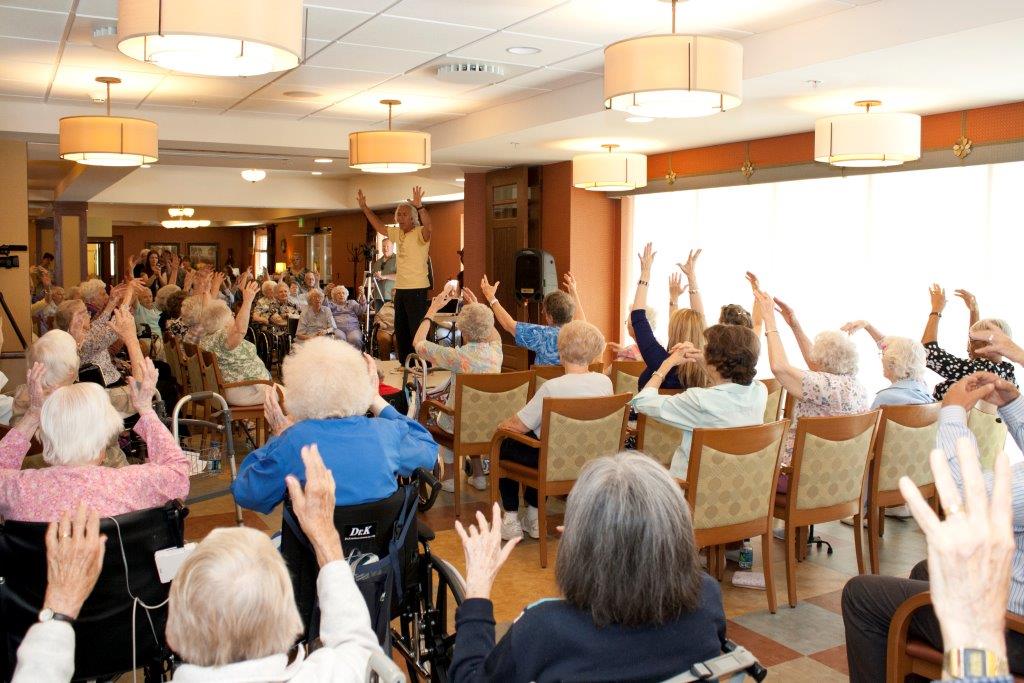Archive for April 2016
Three Tips for Celebrating Mother’s Day When your Mom Has Dementia
“I don’t know what to do about Mother’s Day,” a friend recently told me. “I used to celebrate with my mother, but Mom doesn’t really recognize me now and the holiday won’t mean anything to her.”
My friend was not alone in her dilemma: according to the Shriver Report, ten million women either have Alzheimer’s or are caring for someone with it.
I’d faced the same issue with my mom as she sank into Alzheimer’s. But I’d decided that celebrating Mother’s Day was important for me and for my family, even if Mom didn’t truly understand what was going on.
Here are three tips I devised for reducing the sadness this holiday can trigger and for substituting a celebration of renewal and connection.
Feel Your Frustration and Grief
The happy-family-candy-and-flowers Mother’s Day television commercials seemed to shout at me: “Your mother is no longer who she used to be!” That was true and a spike of sorrow stabbed at me as I mourned my “normal mom.”
Celebration: Talk about your feelings with empathetic friends; feel your grief and the frustration. Explore ways to express yourself, perhaps through journaling, collaging, stomping about. Or cocoon and immerse yourself in mournful movies and music.
Activate Your Appreciations
My mother could not complete a sensible sentence, cook a simple meal or dress herself. She did not know my name or remember any of my accomplishments or stellar qualities.
Celebration: Notice and appreciate the good in your situation. Even though Mom didn’t remember my name, she also didn’t remember any of my shortcomings. She was no longer critical of my parenting skills and no longer shy to show affection. She had a dazzling smile, a whimsical giggle and an ability to look into my eyes. She was content with who I was, whoever I was. These were qualities to celebrate.
Celebrate Yourself and Your New Relationship
Since my mom could not care for herself, I learned to care for her. Our lives wove together and we became deeply connected, as I emerged from being just a daughter to becoming an advocate, spokeswoman and historian for my mother.
Celebration: On Mother’s Day, I stopped to celebrate myself, my flexibility, my sense of humor, my steadfast feelings of responsibility. I gave myself the gift of time and appreciation.
7 Ways to Concoct a Creative Celebration
Share favorite memories
Tell her favorite life stories
List her opinions, maxims and worries
Sing along to favorite family music
Muse over family photos
Serve up easy comfort foods
Share what you’ve learned from your journey with her
Deborah Shouse is the author of Love in the Land of Dementia: Finding Hope in the Caregiver’s Journey. COMING SOON: CONNECTING IN THE LAND OF DEMENTIA: CREATIVE ACTIVITIES TO EXPLORE TOGETHER
An Insider’s Tips for Finding Joy in the Journey
“Alzheimer’s can be a grind,” a caregiver recently told me.
That’s one reason I am constantly seeking those who see the creativity and potential in the journey. I look for inspiration and I found plenty in “Finding Joy in Alzheimer’s: New Hope for Caregivers,” a book by Marie Marley, PhD, and Daniel C. Potts, MD, FAAN. Both have a powerful personal story that they weave into the book, along with practical tips for care partners.
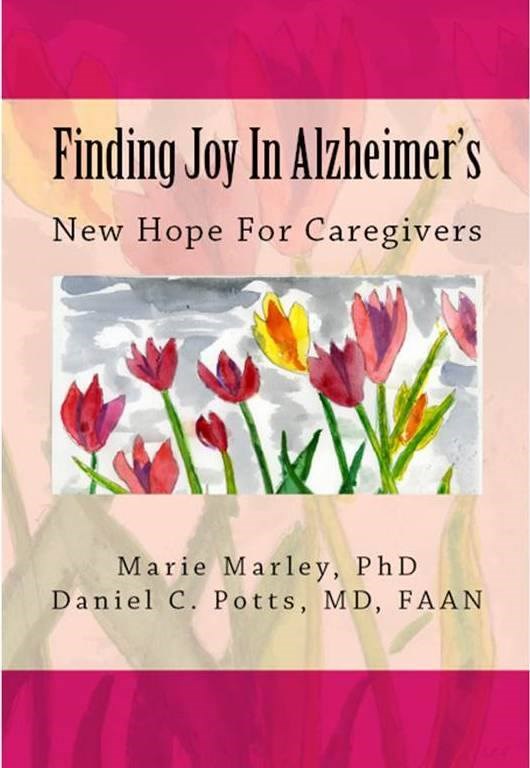 Three Ways to Encourage Your Own Love and Acceptance
Three Ways to Encourage Your Own Love and Acceptance
Here are a few excerpts from Daniel:
- Each interaction we have with another person presents an opportunity to share the hope that is within us.
- As care partners, we must identify and embrace the love present within each individual and we must enable the expression of that love, for personhood to be preserved and dignity promoted. We must also be fully cognizant of the love within ourselves.
- To come to terms with Alzheimer’s you must first let go of the expectation that you’ll find the previous person and instead embrace the new person– just as he is in the present. Since that person will continue changing as time goes by, one must constantly let go of the old person and accept the new one.
Three Ways to Improve Your Time Together
Marie offers these tips for staying connected:
- Use welcoming body language. Don’t sit with your arms crossed; sit with your palms turned upward. This posture says, “I’m receptive to you.”
- Speak slowly and in short, direct sentences, with only one idea to (in) each sentence.
- Laugh a lot. Arrive for your visit with a supply of simple jokes and funny stories.
For more information about Finding Joy in Alzheimer’s, visit ComeBackEarlyToday.com
Deborah Shouse is the author of Love in the Land of Dementia: Finding Hope in the Caregiver’s Journey.
Stirring Up Connections through Cooking
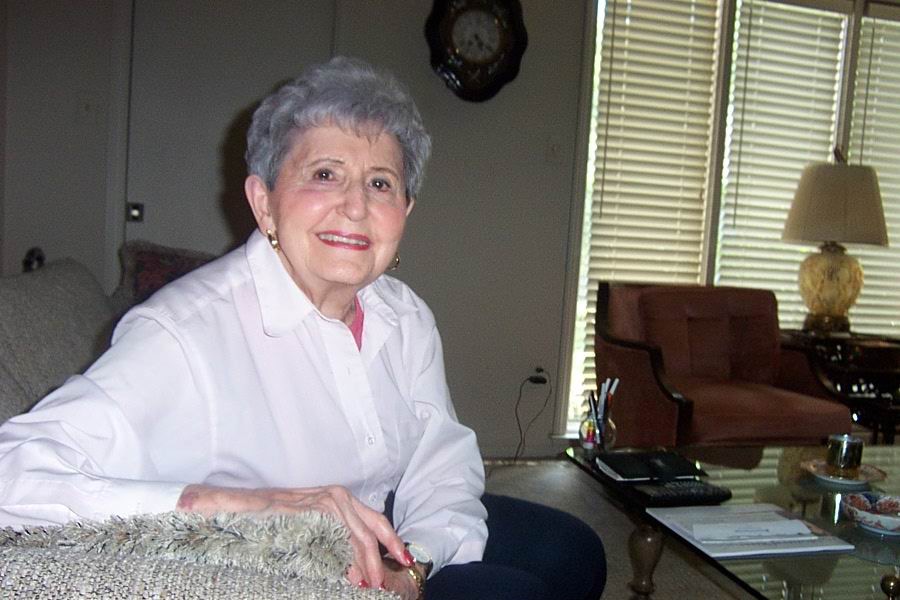 Ron’s mom Mollie was the queen of cooking. Up until age 90, she’d stir up a batch of rice pilaf, use her special grinder to make pink applesauce, or bake her formidable brownies. When she could no longer remember her favorite dishes, we invited her into the kitchen and used her well-worn recipe cards. We chose a time of day when Mollie felt alert and we created a quiet atmosphere, free from extraneous noise and distractions. Since Mollie had trouble standing, we laid our cooking equipment and ingredients on a table, so she could comfortably participate. Then we shared the tasks of measuring, pouring, adding ingredients, stirring, and tasting. We loved this gentle and conversational time in the kitchen. Now Jacqueline Hatch, from Seniorly.com, offers some brain boosting desserts and easy ideas for connecting through the culinary arts.
Ron’s mom Mollie was the queen of cooking. Up until age 90, she’d stir up a batch of rice pilaf, use her special grinder to make pink applesauce, or bake her formidable brownies. When she could no longer remember her favorite dishes, we invited her into the kitchen and used her well-worn recipe cards. We chose a time of day when Mollie felt alert and we created a quiet atmosphere, free from extraneous noise and distractions. Since Mollie had trouble standing, we laid our cooking equipment and ingredients on a table, so she could comfortably participate. Then we shared the tasks of measuring, pouring, adding ingredients, stirring, and tasting. We loved this gentle and conversational time in the kitchen. Now Jacqueline Hatch, from Seniorly.com, offers some brain boosting desserts and easy ideas for connecting through the culinary arts.
Brain Healthy Recipes for the Creative Care Partner
By Jacqueline Hatch
Cooking is a wonderful way to engage the senses and enjoy a meaningful activity with a loved one or client who is living with dementia. According to experts at Alzheimers.net, “Sensory stimulation uses everyday objects to arouse one or more of the five senses (sight, smell, hearing, taste, and touch), with the goal of evoking positive feelings.” Below are some recipes that are simple and fun to make together. These healthy eats provide stimulation for all five senses and are packed with nutrients the brain craves as we age.
Researchers at Scripps Memorial Hospital in California say, “Blueberries help protect the brain from oxidative stress and may reduce the effects of age-related conditions such as Alzheimer’s disease or dementia.” Studies also show that regular consumption of these powerful berries can improve learning skills in aging minds.
- Preheat your oven to 375 degrees.
- Have your loved one help you wash and de-stem 2 pints of blueberries. Together, you can arrange them evenly at the bottom of a 9×9 baking dish. Have her squeeze juice from half a lemon over the top of the berries.
- Together, take a large mixing bowl and combine 1 cup of flour, ¼ cup walnuts, ¼ cup coconut oil, 2 tbsp maple syrup, ¼ tsp cinnamon, and 2 pinches of salt. Invite your loved one to squeeze the other half of the lemon into this mixture and stir until well combined.
- Working as a team, spread this topping mixture over the blueberries, and bake about 30-40 minutes or until the topping is golden.
- Let cool a bit and then enjoy your treat!
Raw Walnut Fudge
The ingredients in this mouth-watering recipe contain tons of nutrients that your brain will love. The coconut oil is rich in antioxidants, the cacao powder contains 4 different neurotransmitters that act as natural anti-depressants, the maple syrup contains manganese and zinc, and the walnuts are rich in omega-3 fatty acids and vitamin E.
- Together, combine 1 cup coconut oil (melted), ¼ cup raw cacao powder, ¼ cup maple syrup, ¼ cup almond butter, ¼ cup organic walnuts (chopped), and 1 tsp vanilla bean powder. Ask your loved one to mix all of these ingredients together with a large spoon.
- Help your loved one spread the mixture evenly in a 5×9 glass pan.
- Put it in the freezer for 30 minutes or until fully hardened.
- Cut and serve!
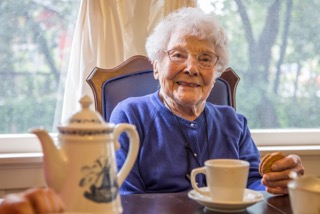 With these easy, healthy recipes on hand, you can get a head start on taking care of your aging brain. Chances are, with the right nutrients in your body, you will even feel happier and more active than ever.
With these easy, healthy recipes on hand, you can get a head start on taking care of your aging brain. Chances are, with the right nutrients in your body, you will even feel happier and more active than ever.
~
Jacqueline Hatch is a writer, editor, and publisher at Seniorly.com, a company that provides support for caregivers and their families during a difficult transition period in their lives. The website provides comprehensive information on aging options, resource articles for healthy living, and a Senior Living Blog.
Sources:
http://www.alzheimers.net/2014-01-23/sensory-stimulation-alzheimers-patients/
http://www.brainhq.com/brain-resources/brain-healthy-foods-nutrition/brain-healthy-recipes
http://www.eatingwell.com/recipes_menus/collections/healthy_mind_and_memory
http://bebrainfit.com/brain-food-recipes/
Deborah Shouse is the author of Love in the Land of Dementia: Finding Hope in the Caregiver’s Journey. Coming soon: Connecting in the Land of Dementia: Creative Activities to Explore Together
Strengthen your Heart, Open Your Ears, and Ignite your Spirit with Conductorcise
Maestro David Dworkin moves his baton and a Strauss waltz begins. But instead of facing a sea of symphonic musicians, the auditorium is filled with people also holding batons, following the Maestro’s movements. They are engaged in the Maestro’s globally renowned exercise program, Conductorcise.
Click here for an exhilarating example: Conductorcise
As the music continues, two women begin to waltz in the aisle. Later, he learns that these women are living with dementia. “They haven’t moved in months,” a health care worker tells him.
At a memory care unit, he passes out batons, handing them even to people who seem slumped and unresponsive. He introduces John Phillip Sousa, offering a few tidbits about the composer. Then he starts a Sousa march and leads his group in vibrant upper body movements. Soon everyone, even three people who seemed oblivious, are conducting along with him.
Such is the power of movement and music.
Leading with Benefits
“The vibrations and energy of the music speak to people,” says Masetro Dworkin. “You benefit from relieving stress, building aerobic stamina, improving listening skills, and increasing social engagement while imagining yourself leading a symphony orchestra.”
As a bonus, you can learn a little about the lives and works of the great composers.
The program appeals to all ages and abilities and has spread around the world, from Holland to Canada to Singapore.
Conducting for Two or More
The program works wonderfully one-on-one.
“You can’t do anything wrong,” Maestro says. “You don’t even need a baton. You can use chopsticks, unsharpened pencils, a straw, or just your arms.”
Here are a few tips for enjoying Conductorcise:
- To get started, you might say, “How about helping me conduct this tune?”
- Select a familiar song your partner enjoys, one that might also inspire conversation and singing.
- Move your arms and upper body to the music and encourage your partner to move as she wishes. Move your lower body as well, if appropriate.
- For those who need extra support, add eye contact and gently stroke their arms.
- Invite friends and family members to join you.
“Everyone wants to be a conductor!” Maestro Dworkin says.
###
Visit http://www.conductorcise.com glean ideas from Maestro’s listening library and information about his training and certification programs.
Julliard-trained Maestro David Dworkin has led orchestras across the globe, and performed as clarinetist with ensembles internationally. He served as conductor and Artistic Consultant for three PBS Television documentaries in the series Grow Old With Me, and devoted much of his career to working with young people. In his 80’s, he has become a sought-after role model for all, demonstrating how exercise, music, joy and a positive outlook can create a healthy journey through life.
Deborah Shouse is the author of Love in the Land of Dementia: Finding Hope in the Caregiver’s Journey.

